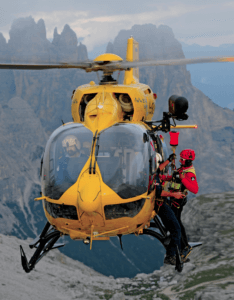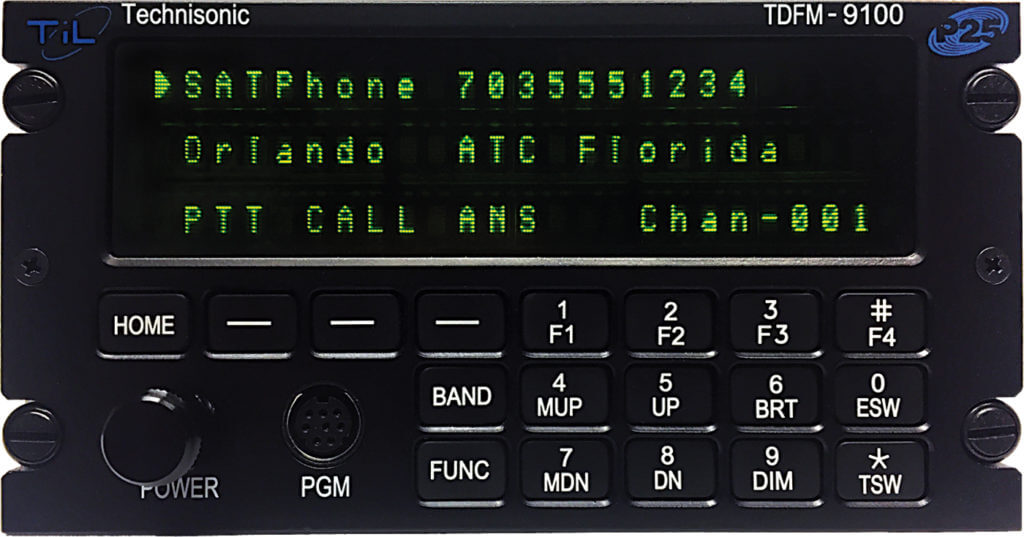As anyone who has worked in the aftermath of a natural disaster can tell you, if you want to maximize safety and efficiency, and effectively save lives, you need good communication.
Of course, it’s not just in the aftermath of natural disasters when good communication is vital. Accident scenes, construc-tion sites, oil-and-gas operations, firefighting missions–pretty much any situation where multiple assets from different organizations are brought together has a need for interconnected and interoperable communications.
 If you’ve worked in one of these situations, you’ve probably asked yourself or others: “What if there was a simple way for all these personnel to cohesively talk with one another–even when the area’s infrastructure doesn’t allow for it or has been damaged or destroyed?”
If you’ve worked in one of these situations, you’ve probably asked yourself or others: “What if there was a simple way for all these personnel to cohesively talk with one another–even when the area’s infrastructure doesn’t allow for it or has been damaged or destroyed?”
Latitude Technologies’ new SkyNode S200-012P system is the exciting answer to that often-posed question. This Aircraft Push-to-Talk Satcom solution allows multiple users on-scene and around the world to instantly talk with one another.
How Push-to-Talk came about
“A number of years ago, one of the largest air medical companies came to us and asked for what’s called netted communications without the boundaries of traditional land mobile radio [LMR], and that’s what this is,” said Latitude president Mark Insley. “At the time, Iridium technology only existed for the DoD [U.S. Department of Defense] within the military environment.”
As the first piece of bringing netted communication/push-to-talk (PTT) to the civilian world, a couple of years ago Iridium created its PTT handset. However, without the aviation component, full-group communication was still not possible.
Enter Latitude Technologies.
Latitude worked with Technisonic (see p.48) to create the avionics portion of the PTT solution. The key component is Latitude’s S200-012P, which is designed to integrate with Technisonic’s widely used, P25-compliant TDFM-9100 airborne transceiver.
 The two systems function cohesively to ensure individuals on the ground and in the air can easily communicate with one another. They interoperate seamlessly between both tactical radio frequencies and wide area coverage from the Iridium satellite network.
The two systems function cohesively to ensure individuals on the ground and in the air can easily communicate with one another. They interoperate seamlessly between both tactical radio frequencies and wide area coverage from the Iridium satellite network.
How PTT benefits operators
“It gives the ability for emergency/first responders to all be connected in a geographic area–land, air and sea,” said Insley. “This works globally, so there’s no specific region it doesn’t work in. It makes for interoperable communications within these zones, giving the ability for everyone to be talking to each other.”
Utilizing Iridium’s PTT Command Center web tool, fleet administrators can determine in real time who will be part of a “talkgroup” and what service areas will be part of that group. There are no dead zones or boundaries, which means personnel and organizations can be anywhere in the world. Also, no infrastructure is required, making it ideal for disaster areas or remote locations.
By designing the S200-012P to work with the TDFM-9100, this PTT solution has “simulcast capabilities,” said Charles Noble, Latitude’s program manager. “This means voice communications from a PTT talkgroup can be interconnected with other LMR channels.”
 Additionally, as David Thomas, Latitude’s director of general aviation and helicopter markets, explained, PTT means you don’t have to dial the phone–and you’re not limited to talking to just one other person. “It’s live all the time.” That means everyone is always listening and is part of the conversation.
Additionally, as David Thomas, Latitude’s director of general aviation and helicopter markets, explained, PTT means you don’t have to dial the phone–and you’re not limited to talking to just one other person. “It’s live all the time.” That means everyone is always listening and is part of the conversation.
However, there is no need to worry about people outside the group listening in. Communications are protected by 256-bit AES encryption, so someone can’t accidentally tap into, scan or maliciously hack into your group’s communications.
How operators can get PTT
Latitude’s S200-012P provides a PTT and SatVoice solution for all future Technisonic TDFM-9100s.
Operators with existing 9100s can get PTT as an upgrade. In either instance, the S200-012P will be a seamless solution that works as just another feature (albeit a very unique and powerful feature) within an aircraft’s Technisonic radio system.
“There is minimal training required and it doesn’t use up additional panel space real estate in the aircraft–unlike competitive options that will need a new control head or audio panel,” said Thomas.
For customers who don’t have a TDFM-9100, Latitude’s S200-012P can also work with its RC-6000/A(S) control head as a standalone system.
 Latitude expects that first responders and parapublic operators will be the initial adopters–especially given the scale and scope of natural disasters that have been taking place around the world. However, since the S200-012P “is not only revolutionary but also quite affordable,” Insley said other sectors may soon want to take advantage of PTT-enabled Satcom, as well.
Latitude expects that first responders and parapublic operators will be the initial adopters–especially given the scale and scope of natural disasters that have been taking place around the world. However, since the S200-012P “is not only revolutionary but also quite affordable,” Insley said other sectors may soon want to take advantage of PTT-enabled Satcom, as well.
“For anyone who needs air-to-air and air-to-ground communications to be linked together, this is an extremely flexible system where you can move assets in and out of particular talkgroups very easily.”
For customers visiting Latitude’s booth (No. C2030) at Heli-Expo 2018, the company will also have its IONode and Skynode product line on hand, and can discuss how its existing offerings or custom solutions can address all flight data monitoring, flight following, and satellite data and voice communication needs.









